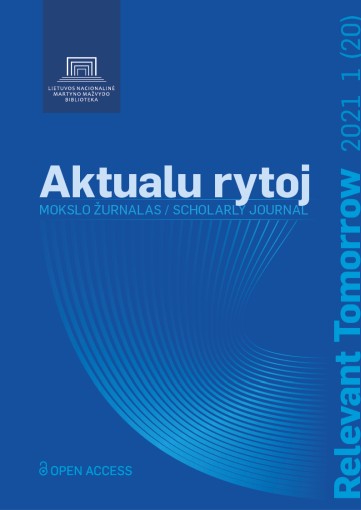Lietuvos nacionalinės Martyno Mažvydo bibliotekos parodos „Chameleono spalvos“ koncepcija: Lietuvos sovietinė fotografija kaip 1978‒1982 m. ideologinės tikrovės konstruktai
DOI:
https://doi.org/10.51740/RT.1.20.4Reikšminiai žodžiai:
naujienų agentūra Elta, sovietmečio fotožurnalizmas, ideologija, propaganda, (vaizdinė) tikrovės reprezentacija, sovietmečio (neformalus) konceptualizmasSantrauka
Straipsnyje pateikta Lietuvos nacionalinėje Martyno Mažvydo bibliotekoje (LNB) 2022 m. liepos 7 – rugpjūčio 26 d. vykusios parodos „Chameleono spalvos“ koncepcijos eksplikacija. Paroda traktuojama kaip atsakas į nūdienos geopolitinių sukrėtimų (vienas jų – karas prieš Ukrainą) fone iškylančius aštrius sovietmečio politinio, kultūrinio, netgi mentalinio palikimo klausimus. Lietuvos sovietinio laikotarpio rašytojo Jono Avyžiaus romano pavadinimą dubliuojančioje parodoje gretinami 1979‒1982 m. naujienų agentūros Elta fotoreportažai ir andergraundinio vizualiojo avangardo darbų pavyzdžiai. Šių darbų jungiamoji grandis – ano meto (socialinė) tikrovė, nuo kurios atsispiriama, tačiau abiem atvejais turime kardinaliai skirtingas (vaizdines) tikrovės koncepcijas. Ištyrus Eltos fotoreportažus, išryškėjo sovietinis oficiozinis ideologinis filtras, kuris buvo „uždedamas“ ant tikrovės. Vadinamojo meninio andergraundo pavyzdžiai, viena vertus, išaugę iš ano meto ‒ socialinių paribių ar netgi užribių ‒ situacijos (jausenų, būsenų ir impulsyvių refleksijų). Kita vertus, šių objektų, nuotraukų ir koliažų, „chaotiškumas“ ir eklektika pasižymi vidine logika, būdinga XX a. 6–7 dešimtmečių Vakarų neoavangardui ir 8–9 dešimtmečių Vidurio ir Rytų Europos, taip pat Sovietų Sąjungos, neformaliam konceptualizmui. Šiais darbais stengiamasi sovietinę (socialinę) tikrovę deidealizuoti, demaskuoti ir depolitizuoti, tačiau kartu ir savitai reideologizuoti.
Downloads
Atsisiuntimai
Publikuota
Kaip cituoti
Numeris
Skyrius
Licencija

Šis kūrinys yra platinamas pagal Kūrybinių bendrijų Priskyrimas 4.0 tarptautinę licenciją.









